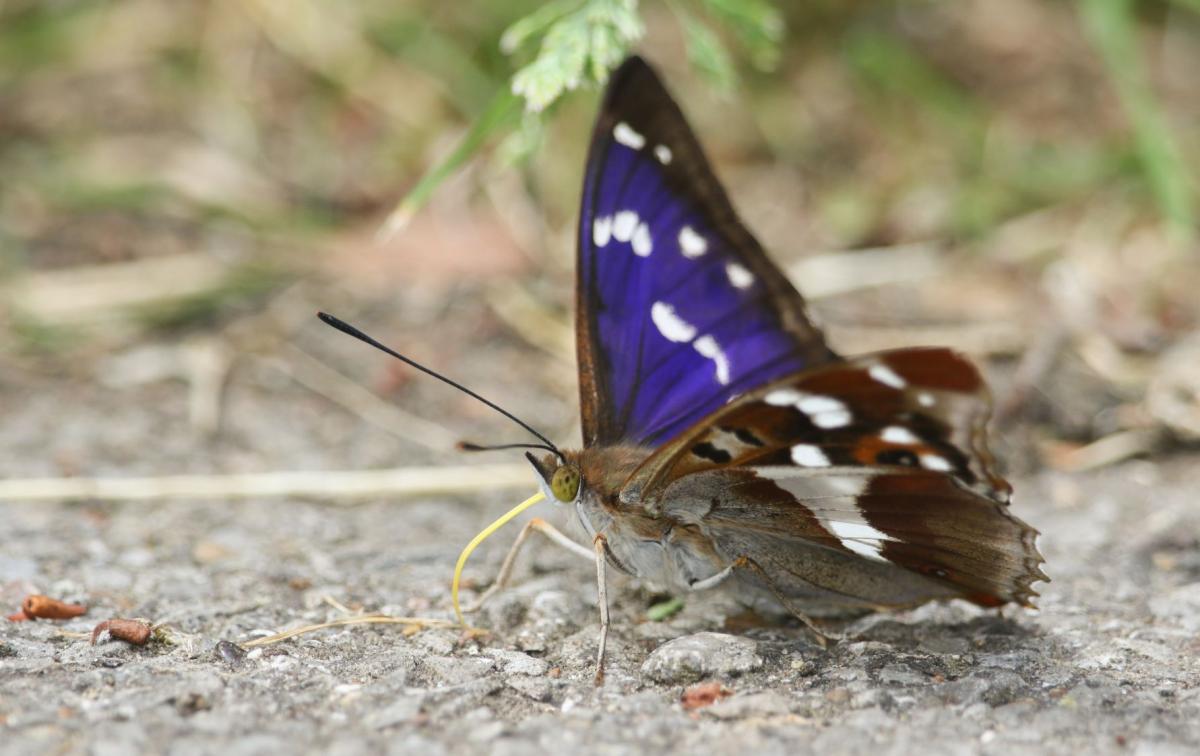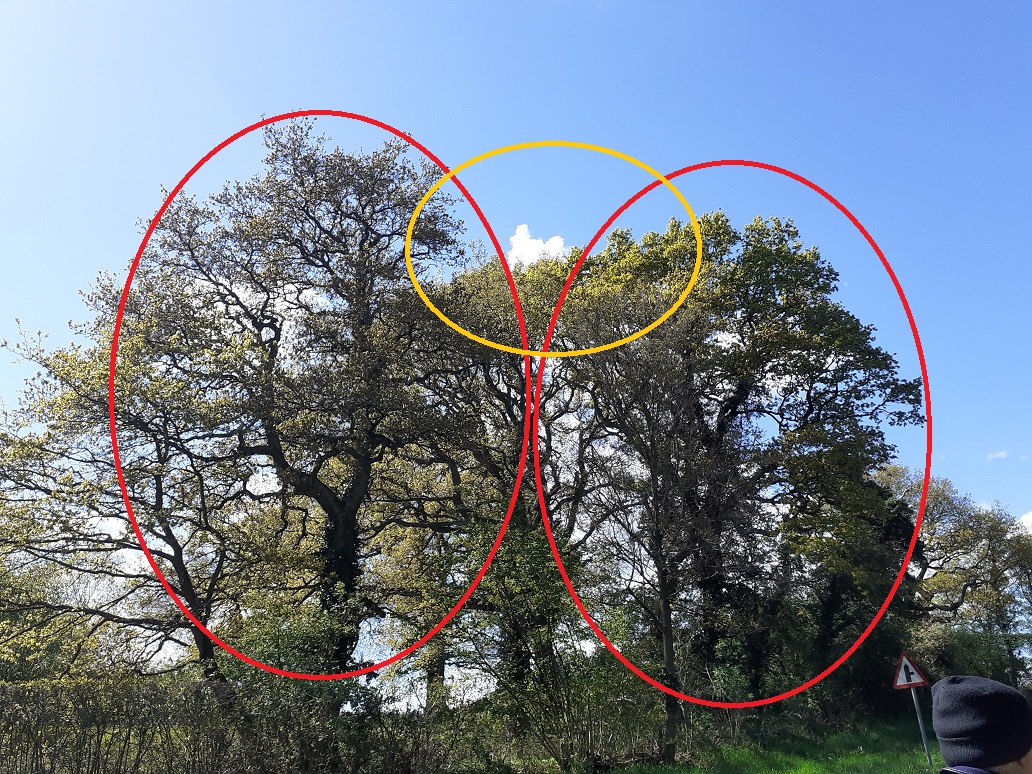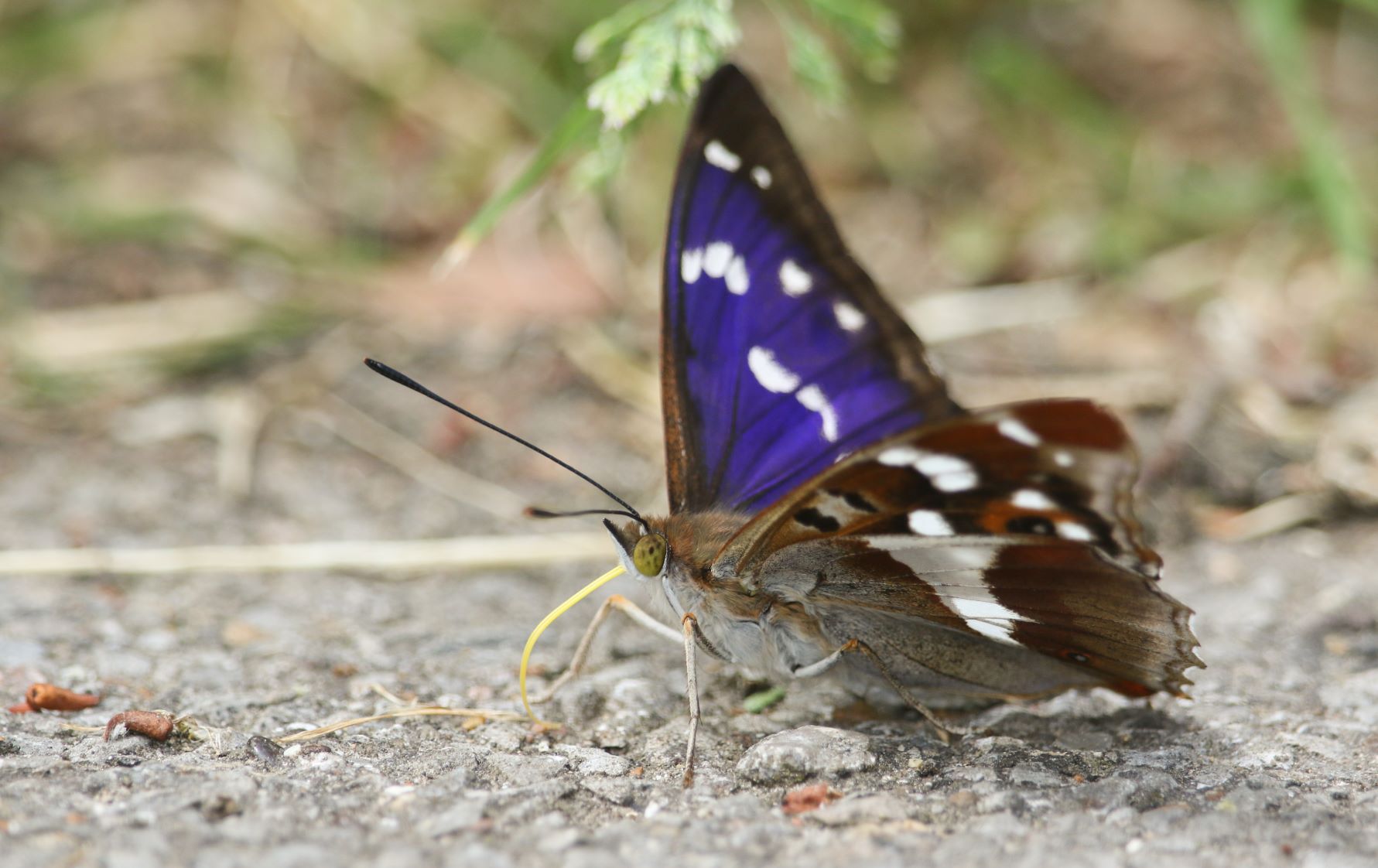
Why the purple emperor butterfly is flourishing in the Forest
Matthew Oates, one of the country’s leading experts on the purple emperor butterfly, spent four days at different sites around the Forest in early May 2021 assessing the Forest’s potential for this rare butterfly. His findings show vast potential for the purple emperor here. Find out more about this magnificent butterfly and how we are managing the Forest habitats to help it thrive.

The purple emperor is widely considered the most impressive butterfly species in the UK. The male is one of the most beautiful butterflies in the country with its blue/black wings and white bands. Despite the name, the females are not purple at all, but rather a deep brown colour.
It is the largest butterfly we have in the Forest and one of the most difficult to spot as it spends most of its time in the tree canopy.
Males establish territories at the top of prominent oak trees, usually on top of hills and sheltered from the wind. They are often drawn to the microclimate created when there are two or more oak trees near each other that touch and form a hollow u-shape space in the canopy.
They favour oak trees as both sexes feed from oak sap and because the trees are often densely foliaged. Their territories must also be close to or uphill of sallow stands as this is their main caterpillar foodplant.

Where did the purple emperor butterfly come from?
The purple emperor was first introduced into Warwickshire in 2004, when 80 captive-bred adults were released into Oversley Wood, just south of Alcester, as well as woodland near Coventry.
The species was first noted in the Forest in 2015 at Spernal Park, presumably having colonised from Oversley Wood during the excellent purple emperor season of 2013. It then turned up again in the Forest in Bannam’s Wood in 2017. The butterfly’s colonisation of Warwickshire may also have occurred from populations near the county boundary in Northamptonshire and Oxfordshire.
Purple emperors in the Forest
The purple emperor is most common in areas of the Forest where sallows have been planted or naturally grow, as they are the main foodplant for its caterpillars. This includes some of our ancient and mature woodlands, like Bannam’s Wood, Spernal Park, and Morgrove Coppice. Most of our sightings have been around Spernal as it is closest to Oversley Wood, has masses of sallow, and many veteran oak trees.
There are burgeoning sallows lining both sides of Spernal Lane; Matthew anticipates there will be up to twelve males here using the best roadside oaks during peak season, massive by purple emperor standards, as well as other oaks along the lane.
From the suitable habitats at Alne Wood, Badbury Hill and Coughton Park, Matthew also predicts there are males residing there. This year, he also managed to spot the first purple emperor larvae in a sallow at Giddings Wood in Dorsington, which is promising for future populations.
Matthew also believes the purple emperor population is much greater than we know around the Forest, and across the UK, as they are so difficult to spot.
Spotting tips

As these butterflies spend most of their time out of sight at the top of oak trees, they are notoriously difficult to spy. Your best chance would be on oaks along the south-eastern edge of the Morgrove Coppice car park where the permissive path enters the woodland, especially around the small pond.
The best time to see them close-up is early in the season, around the end of June and the start of July, when they descend from their territories in the morning to feed on animal poo.
The future for purple emperor in the Forest
Matthew’s overall impression from his surveys is that there is a vast, almost overwhelming, potential for purple emperor butterflies around the Heart of England Forest. The ancient woodland relics of Bannam’s Wood, Coughton Park, Morgrove Coppice, and Spernal Park are of massive potential, and we are likely to become a top national site for this butterfly within a few years.
Sallows are normally quite capable of planting themselves which should encourage purple emperors without any interference.
As well as natural regeneration, we are taking a few steps to ensure we are doing everything we can to help. Our dedicated volunteers will be spreading sallow seed around the Dorsington area of the Forest over the next few weeks. As part of our greater vision to plant and protect a 30,000 acre Forest, sallows are always being planted across our land. This means that the young plantations we are planting now should create ideal habitats for purple emperors over the next ten years.
We aim to continue surveying purple emperors annually across the Forest, with the help of Matthew Oates and our team of volunteers. Surveying for different species enables us to gather an accurate picture of the biodiversity in the Forest and assess if the actions we are taking are effective.



